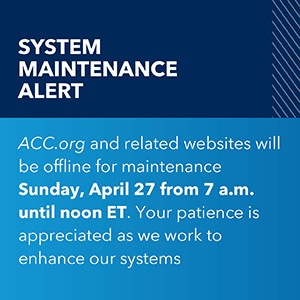Cerebral Venous Thrombosis After COVID-19 Vaccination
Quick Takes
- Patients with vaccine-induced thrombotic thrombocytopenia (VITT) experience a high rate of morbidity and mortality.
- Use of nonheparin anticoagulation and IVIg may be associated with better outcomes in VITT.
- Diagnosis of VITT can be made with positive imaging, thrombocytopenia, and markedly elevated D-dimer if anti-PF4 ELISA testing is not available.
Study Questions:
What are the features and outcomes of post-vaccination cerebral venous thrombosis (CVT) with and without vaccine-induced thrombotic thrombocytopenia (VITT)?
Methods:
The authors conducted a multicenter cohort study of patients with CVT following coronavirus disease 2019 (COVID-19) vaccination regardless of type of vaccine or time interval between vaccination and CVT. Cases were defined as VITT if the lowest platelet count recorded was below 150 x 109/L and a D-dimer (if measured) was >2000 µg/L. VITT and non-VITT cases were compared based on their outcomes of death or dependence on others for help with activities of daily living (defined as modified Rankin score 3-6) at hospital discharge.
Results:
Between April 1 and May 20, 2021, data from 99 patients at 43 hospitals were collected. Four cases were excluded due to nondefinitive CVT diagnosis on imaging. Of the remaining 95 cases, 70 had VITT and 25 did not. Median age for the VITT group was lower than non-VITT (47 vs. 57 years, p = 0.005). Patients with VITT had more intracranial veins thrombosed than non-VITT (median 3 vs. 2, p = 0.041). The primary outcome of death or dependency for activities of daily living was more common in patients with VITT than non-VITT (47% vs. 16%, p = 0.006). The primary outcome was less common among patients with VITT who received nonheparin anticoagulants than those who received heparin (36% vs. 75%, p = 0.003) and in those who received intravenous immunoglobulin (IVIg) than those who did not (40% vs. 73%, p = 0.022).
Conclusions:
The authors concluded that CVT is more severe in the context of VITT. Furthermore, they concluded that nonheparin anticoagulation and IVIg treatment are associated with better outcomes.
Perspective:
Since the first reports of CVT after COVID-19 vaccinations in Europe and the United Kingdom (UK) were reported in April 2021, there has been significant scrutiny into the frequency, severity, and treatment of this new condition. This cohort study from the UK highlights the high morbidity and mortality associated with VITT. It also suggests that use of nonheparin anticoagulant (e.g., argatroban, direct oral anticoagulants) and IVIg may be associated with improved clinical outcomes, similar to severe cases of autoimmune heparin-induced thrombocytopenia. Notably, this study did not require anti–platelet factor 4 (anti-PF4) antibodies detected on enzyme-linked immunosorbent assay (ELISA) for a diagnosis of VITT, which is currently recommended by most society and expert guidance documents. Rather, it relied on the combination of conclusive imaging for CVT, evidence of thrombocytopenia, and coagulopathy (elevated D-dimer). As these laboratory tests are more widely available globally, this may aid with appropriate diagnosis and management of future cases. Clinicians should maintain a high level of suspicion for any patient who developed CVT after receiving a COVID-19 vaccine (especially an adenovirus vector vaccine, such as AstraZeneca or Johnson & Johnson). These patients require prompt evaluation with laboratory studies (complete blood count, D-dimer, anti-PF4 ELISA if available) and initiation of nonheparin anticoagulation under the guidance of a thrombosis expert.
Clinical Topics: Anticoagulation Management, COVID-19 Hub, Noninvasive Imaging, Prevention, Vascular Medicine
Keywords: Activities of Daily Living, Adenovirus Vaccines, Anticoagulants, COVID-19, Diagnostic Imaging, Enzyme-Linked Immunosorbent Assay, Heparin, Immunoglobulins, Intravenous, Patient Discharge, Platelet Factor 4, Secondary Prevention, Thrombocytopenia, Vaccination, Vascular Diseases, Venous Thrombosis

